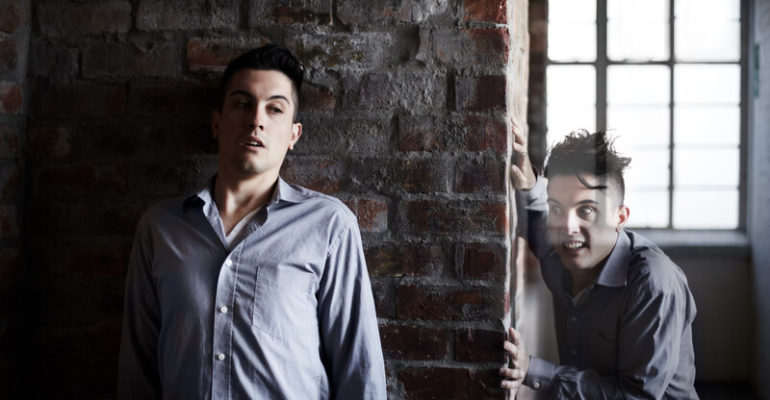The Monster in Our Head

The Monster in Our Head
Doing the same thing over and over while expecting a different result is the definition of insanity[1]. We all know that, yet we do exactly that. Why? Because that’s what insanity is. We know we’re doing it but we “just cannot stop it.” Our prefrontal cortex, particularly, our ventrolateral prefrontal cortex, our inferior frontal gyrus, and the insula seem to betray us. It is as if an enemy (our limbic system[2]) comes to our house, starts to attack, and we run to find our parents (our prefrontal cortex) in a deep sleep, and no matter what we do, we cannot wake them up. This is insane, scary in itself; and we are afraid it’s going to keep happening, and the more we dread it the more it happens, and we are now helpless.
This level of helplessness then sets the stage for how we relate to all future attacks – attacks that we see come from the outside at the exact moment when our parents (our prefrontal cortex) go to sleep, and this only reinforces, time and time again, our sense of helplessness. This sense of helplessness is correlated with a decrease in BDNF (our brain-derived neurotrophic factor) in the hippocampus, the area of the brain, which is supposed to help us remember that the last time, there was no monster really attacking us, but it was all our own thoughts, our own unconscious patterns, our own reactions. Once again, we are being betrayed by these parents, who are supposed to protect us.
This, until one day, we finally get it. We realize that the way to go about doing it is not by trying to fight the monsters back. Our parents, who are supposed to be stronger, and who could protect us happen to be always sleeping each time the monsters come. We then realize that we are to be more strategic. And the best strategy starts with understanding our monster – its tendency, when it is more likely to come to attack us; when it’s more likely to be stronger; and how it knows when exactly our parents are sleeping! We try this out and make some progress. However, we soon realize that the monster just outsmarted us. How frustrating! What a hopeless situation.
Until…we realize we have only been strategizing based on one piece of the puzzle. And, where strategizing can be helpful, the monster is still able to outsmart our strategy. This is when we realize that strategizing is making use of our conscious efforts, our willpower alone. We then realize that strategizing will really help only when we are willing to mimic our monster – behave exactly as it does, resist it not [3], make peace with it, befriend it, and discover that all along, we had created it. Then and only then can it stop attacking us and can it start serving us.
This is then when we realize that communicating as often as possible with that part of ourselves, which we thought was our monster is the single best step in eradicating this monster, once and for all.
These monsters are patterns in our unconscious mind that we have been reinforcing over and over through our continuous reactions to them. Instead of reacting, we now know to simply observe, be aware, remain equanimous, calm, peaceful, and let the paradox unfold – the monster dies out, piece by piece, with no resistance, no fiction, with no more fear, and helplessness now, becomes courage.
You probably have not heard of Harry Grundfest[4], but he used to be the one person in New York doing work on the brain at Columbia. As a neurologist, Grundfest was to become the mentor of the 2000 Nobel Prize Laureate in Physiology or Medicine, Eric Kandel, who had joined Columbia to work with Grundfest. A psychiatrist, psychoanalyst, and neuroscientist, Kandel always wanted to find where exactly the id, the ego, and the super-ego are located in the brain. Gundfrest, looking at Kandel, explained to him that the best way to approach the brain to make such a discovery is to study one cell at a time[5]. One cell at a time, did he study the brain, indeed, and his work, which led him to win the Nobel Prize, has convinced him of how, like Freud, famously said, “The mind is like an iceberg, it floats with one-seventh of its bulk above water.” The six-sevenths of the mind is that unconscious mind where the monster lies, but a monster we need not be afraid of when we learn to observe it, let it emerge to our conscious mind, and remain equanimous in its presence. This will allow its eradication, and this is all possible through our unconscious-based interventions, and this is an experience worth having and worth sharing.
[1] Wilczek, F. (2015, September 23). Einstein’s parable of quantum insanity. Scientific American. Retrieved June 23, 2022, from https://www.scientificamerican.com/article/einstein-s-parable-of-quantum-insanity/
[2] Catani, M; Dell’Acqua, F; Thiebaut De Schotten, M (2013). “A revised limbic system model for memory, emotion and behaviour”. Neuroscience and Biobehavioral Reviews. 37 (8): 1724–37. doi:10.1016/j.neubiorev.2013.07.001. PMID 23850593. S2CID 28044712.
[3] Wild. (2019, September 6). What you resist persists: 10 ways to overcome resistance. Wellbeing Wild. Retrieved June 23, 2022, from https://www.wellbeing.com.au/wild/what-you-resist-persists-10-ways-overcome-resistance
[4] New York Times:Dr. Harry Grundfest; Professor of Neurology, Published: October 12, 1983
[5] Dudai, Y. A journey to remember. Nature 441, 157–159 (2006). https://doi.org/10.1038/441157a








